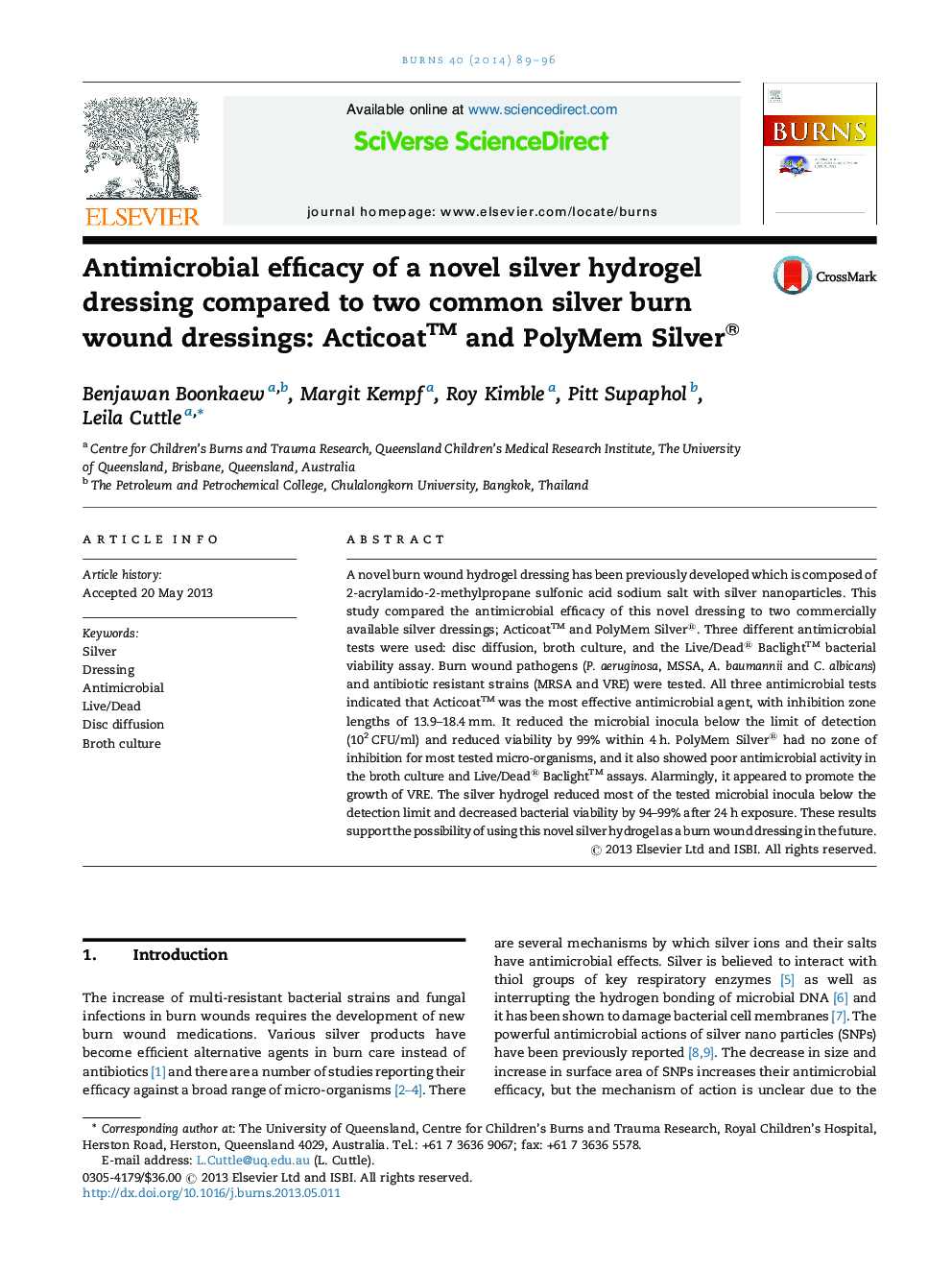| Article ID | Journal | Published Year | Pages | File Type |
|---|---|---|---|---|
| 3104624 | Burns | 2014 | 8 Pages |
A novel burn wound hydrogel dressing has been previously developed which is composed of 2-acrylamido-2-methylpropane sulfonic acid sodium salt with silver nanoparticles. This study compared the antimicrobial efficacy of this novel dressing to two commercially available silver dressings; Acticoat™ and PolyMem Silver®. Three different antimicrobial tests were used: disc diffusion, broth culture, and the Live/Dead® Baclight™ bacterial viability assay. Burn wound pathogens (P. aeruginosa, MSSA, A. baumannii and C. albicans) and antibiotic resistant strains (MRSA and VRE) were tested. All three antimicrobial tests indicated that Acticoat™ was the most effective antimicrobial agent, with inhibition zone lengths of 13.9–18.4 mm. It reduced the microbial inocula below the limit of detection (102 CFU/ml) and reduced viability by 99% within 4 h. PolyMem Silver® had no zone of inhibition for most tested micro-organisms, and it also showed poor antimicrobial activity in the broth culture and Live/Dead® Baclight™ assays. Alarmingly, it appeared to promote the growth of VRE. The silver hydrogel reduced most of the tested microbial inocula below the detection limit and decreased bacterial viability by 94–99% after 24 h exposure. These results support the possibility of using this novel silver hydrogel as a burn wound dressing in the future.
